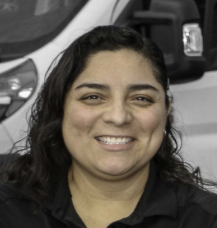Unseen Dangers: Why Suicide Cleanup Requires More Than Just Cleaning
In the aftermath of a suicide, families and loved ones are left grappling not only with unimaginable emotional pain but also with the daunting task of restoring the space where the tragedy occurred. While it may seem like this task simply involves surface-level cleaning, the reality is far more complex—and far more dangerous. Suicide cleanup requires professional expertise, not just for sanitary reasons, but also for the health, legal, and emotional safety of everyone involved.
At 360 Hazardous Cleanup, we understand that what lies beneath the surface is often more hazardous than what’s immediately visible. Our trained technicians are not just cleaners—they are compassionate professionals equipped to handle the unseen threats that come with suicide scenes. Here’s why this specialized work demands much more than a mop and bucket.
1. Biohazards Are Not Always Visible
One of the most critical reasons to hire professionals for suicide cleanup is the presence of biohazards. Blood and bodily fluids can seep into floors, walls, furniture, and even HVAC systems. Even if the affected area appears clean to the naked eye, microscopic pathogens can linger, posing serious health risks.
These fluids may carry dangerous bloodborne pathogens like:
-
Hepatitis B & C
-
HIV
-
MRSA
-
C. diff
Improper cleanup could expose future inhabitants of the home—or even the person attempting the cleaning—to these pathogens, sometimes without immediate symptoms. That’s why 360 Hazardous Cleanup uses hospital-grade disinfectants and ATP (adenosine triphosphate) testing to ensure every surface is thoroughly decontaminated.
2. Legal and Regulatory Compliance
Many people don’t realize that suicide cleanup must comply with local, state, and federal regulations. Inappropriate handling or disposal of biohazardous waste can lead to legal consequences and environmental contamination.
Our technicians are certified in OSHA’s Bloodborne Pathogens Standard and follow protocols laid out by agencies such as:
-
EPA (Environmental Protection Agency)
-
OSHA (Occupational Safety and Health Administration)
-
State Health Departments
We also ensure proper transportation and disposal of contaminated materials at approved biohazard disposal facilities, taking that burden completely off your hands.
3. The Emotional Toll of DIY Cleanup
Grieving a loss is already emotionally overwhelming. Asking a family member to clean up after a suicide can cause additional trauma and even lead to long-term psychological consequences, including PTSD.
At 360 Hazardous Cleanup, we prioritize compassion and discretion. Our technicians are trained to work quietly, respectfully, and without judgment. We approach each scene with care, ensuring that loved ones are not further traumatized by the cleanup process. Hiring a professional not only removes the physical danger but also provides emotional relief during a time of immense distress.
4. Specialized Equipment and Training
General cleaning tools and household cleaners are not sufficient for suicide cleanup. 360 Hazardous Cleanup uses:
-
Personal protective equipment (PPE) such as hazmat suits, respirators, and gloves
-
Industrial-strength decontaminants
-
Ozone and hydroxyl generators to eliminate lingering odors
-
HEPA vacuums and air scrubbers to remove airborne contaminants
Our technicians are trained in advanced remediation techniques and understand how to thoroughly disinfect all affected materials—including what can be salvaged and what must be safely removed and replaced.
5. Restoration and Structural Integrity
When bodily fluids are involved, contamination may reach beyond carpets and upholstery. Fluids can penetrate subflooring, drywall, and other structural components. Without professional remediation, these areas can become breeding grounds for mold and bacteria, creating future health hazards.
360 Hazardous Cleanup doesn’t stop at surface cleaning—we inspect, remove, and restore contaminated materials to make the space safe and livable again. Our goal is full remediation, not just appearance.
6. Insurance Coordination
Many homeowners’ insurance policies cover the cost of biohazard remediation, including suicide cleanup. However, navigating the claims process can be confusing and overwhelming, especially in the wake of a tragedy.
We work directly with insurance providers to:
-
Document the scene and services provided
-
Provide detailed estimates and reports
-
Expedite claim approval and billing
This ensures that our clients can focus on healing rather than bureaucracy.
7. Privacy and Discretion
At 360 Hazardous Cleanup, we understand that discretion is vital. We operate with unmarked vehicles when requested, and our technicians are trained to maintain the highest level of confidentiality. Suicide is a deeply personal tragedy, and our team treats every situation with respect and professionalism.
8. Community Support and Compassionate Service
We recognize that each suicide scene represents not just a cleanup job, but a life lost and a family in mourning. Our work is grounded in empathy, and we often connect families with grief counselors and local support resources. We see our role as part of a broader community response that includes emotional, spiritual, and psychological healing.
Conclusion: More Than Just Cleaning
Suicide cleanup is one of the most challenging tasks any family or property owner can face. It involves far more than removing stains or sanitizing a room. It requires a meticulous, medically-informed process that addresses hidden dangers, emotional trauma, legal compliance, and public health safety.
At 360 Hazardous Cleanup, we bring not just technical expertise, but humanity and compassion to every scene. Our mission is to restore safety, dignity, and peace to those affected by tragedy.
If you or someone you know is facing this difficult situation, don’t go through it alone. Contact 360 Hazardous Cleanup for professional, discreet, and respectful suicide remediation services. Let us help you take the first step toward healing.

